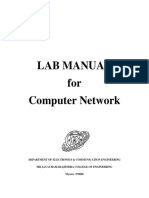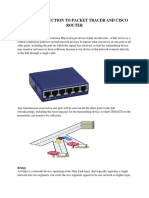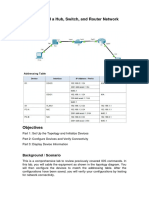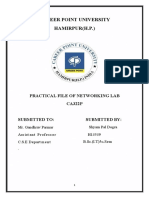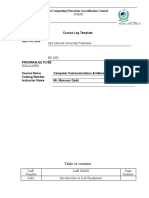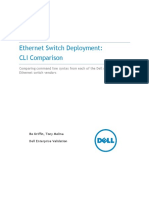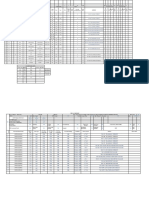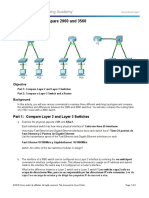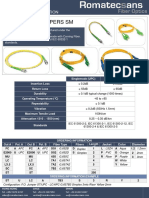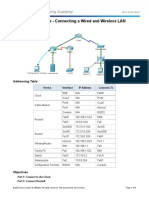0% found this document useful (0 votes)
200 views42 pagesPractical-01: Introduction To Computer Network: Router
A router connects two networks and allows communication between devices in different networks. The document discusses different networking devices - routers, switches, wireless routers and their functions. It also explains various types of cables used like straight through cable, crossover cable and their usage. Key points are:
- Router forwards data packets between networks and performs traffic directing functions.
- Switch connects devices within a network and forwards data at the data link layer.
- Wireless router replaces wires with radio signals to enable wireless networking.
- Straight through cable connects a device directly to a switch while crossover cable connects similar devices in different networks.
Uploaded by
SANDEEP SINGH RANACopyright
© © All Rights Reserved
We take content rights seriously. If you suspect this is your content, claim it here.
Available Formats
Download as DOCX, PDF, TXT or read online on Scribd
0% found this document useful (0 votes)
200 views42 pagesPractical-01: Introduction To Computer Network: Router
A router connects two networks and allows communication between devices in different networks. The document discusses different networking devices - routers, switches, wireless routers and their functions. It also explains various types of cables used like straight through cable, crossover cable and their usage. Key points are:
- Router forwards data packets between networks and performs traffic directing functions.
- Switch connects devices within a network and forwards data at the data link layer.
- Wireless router replaces wires with radio signals to enable wireless networking.
- Straight through cable connects a device directly to a switch while crossover cable connects similar devices in different networks.
Uploaded by
SANDEEP SINGH RANACopyright
© © All Rights Reserved
We take content rights seriously. If you suspect this is your content, claim it here.
Available Formats
Download as DOCX, PDF, TXT or read online on Scribd
/ 42












